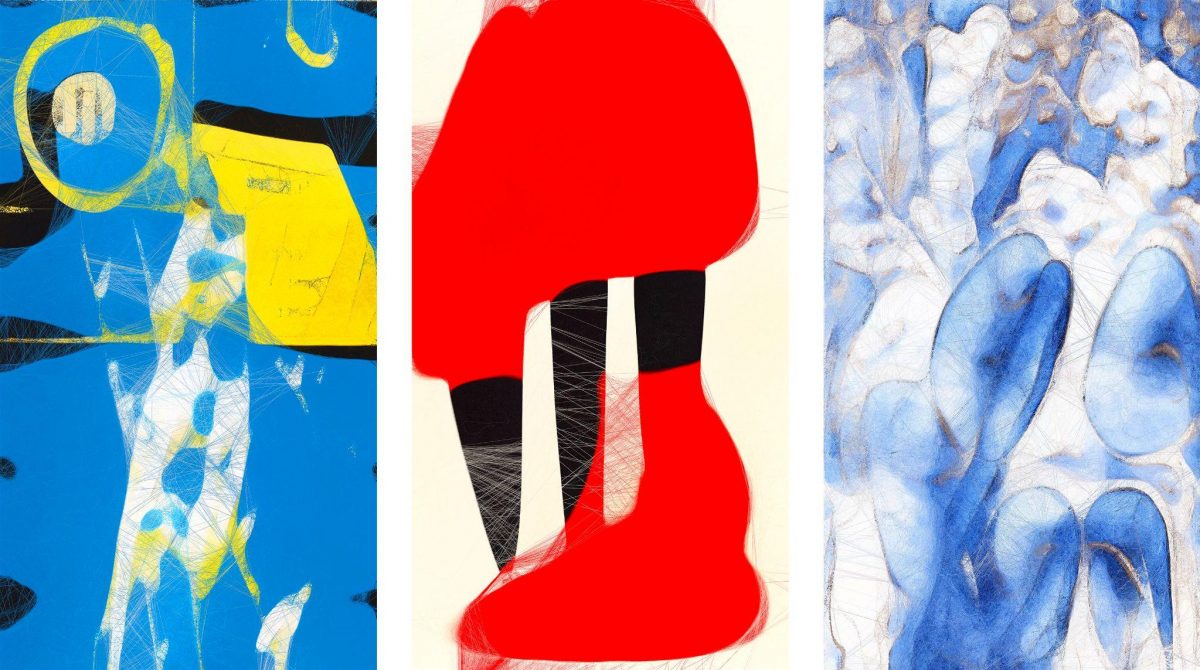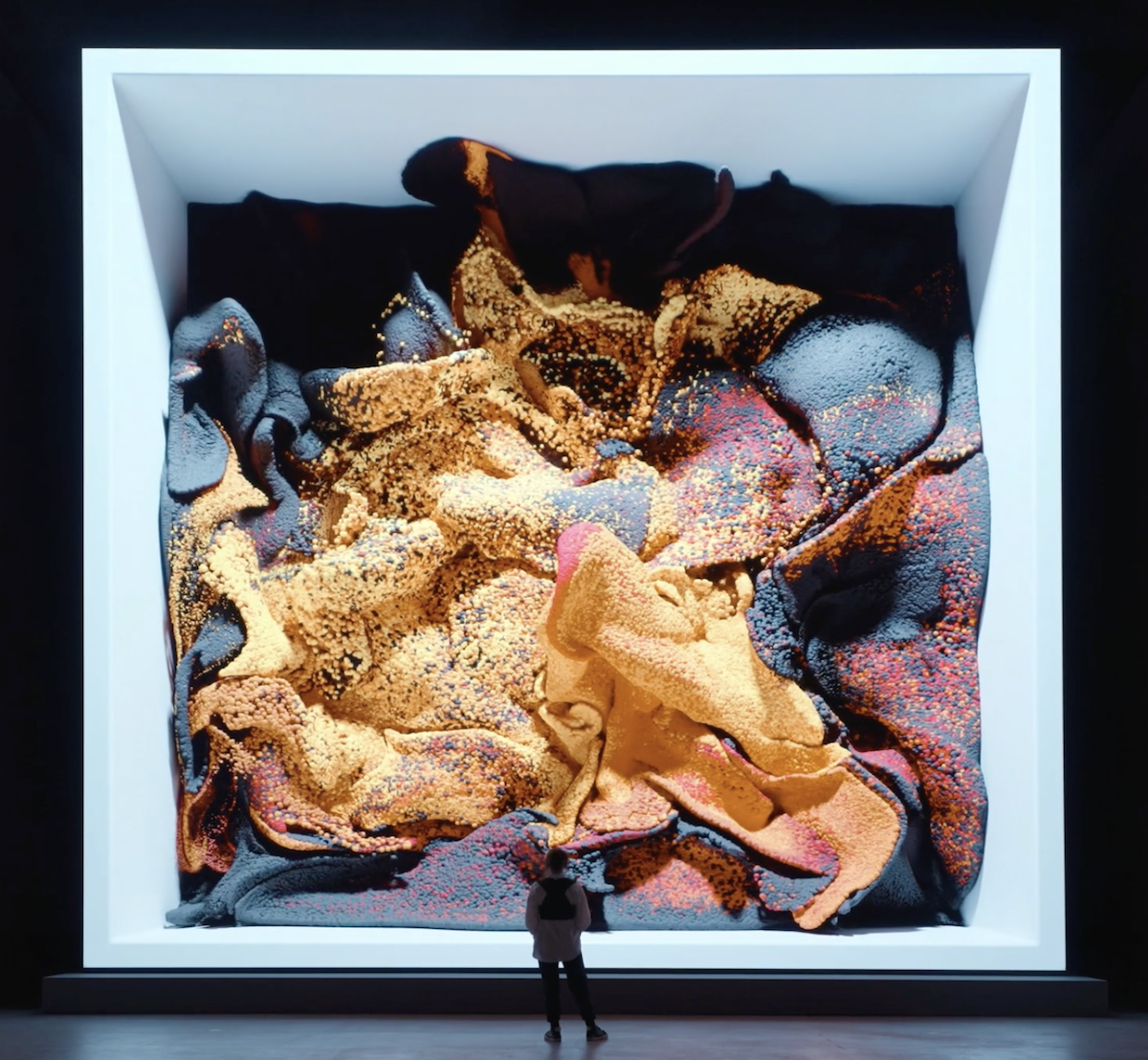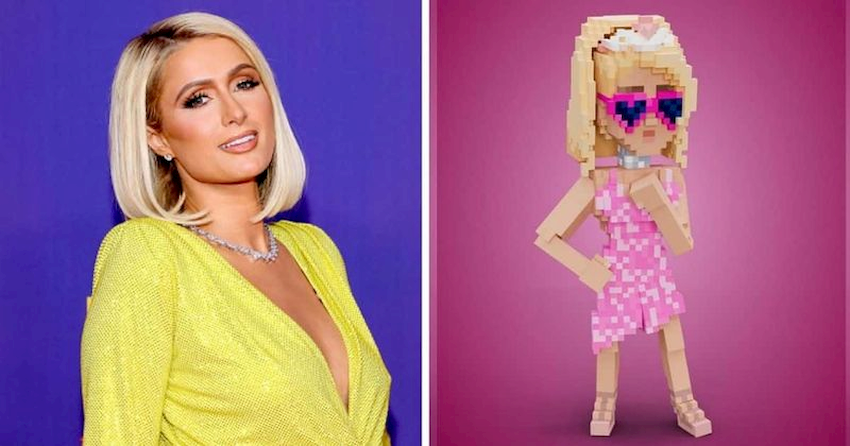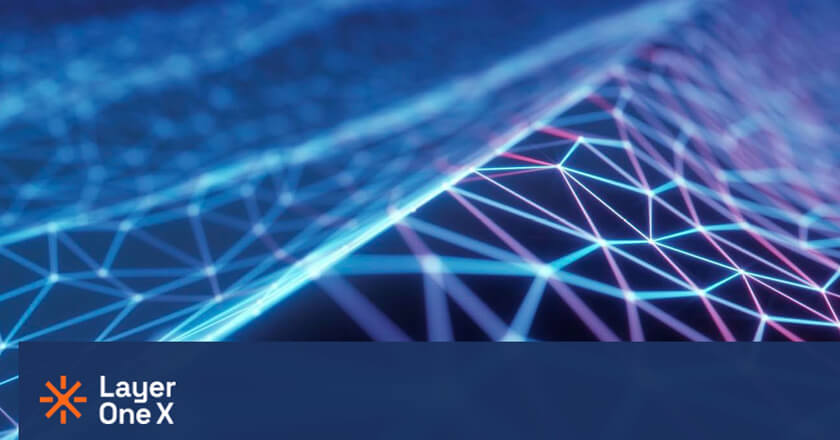Refik Anadol on how AI ‘Imagination’ boosts memory with NFTs

On June 25, 1949, the British neurologist Geoffrey Jefferson gave a lecture to the Royal College of Surgeons of England entitled The thought of the mechanical man. It may be surprising that machine intelligence was the subject of much debate in Jefferson’s time, with some describing the 1904s as the period in which artificial intelligence was born after the development of cybernetics. Jefferson’s ideas about the intersection of man and machine were ahead of their time and even impressed the great Alan Turing with their insight and clarity.
“[N]Until a machine can write a sonnet or a concerto because of thoughts and feelings, and not by the random fall of symbols, we can agree that machine is equal to brain – that is, not only writing it, but knowing that it has wrote it, Jefferson said in his lecture. “No mechanism could feel (and not merely artificially signal, a facile contrivance) joy at its successes, sorrow when the valves fuse together, be warmed by flattery, be made miserable by its faults, be charmed by sex, be angry or miserable when it can’t get what it wants.”
The issue of artificial intelligence
Whether they know it or not, critics of AI’s application in the art world – and by extension the NFT world – are using a version of Jefferson’s argument when they decry that the technology takes something away from the creative “soul” of artists and their work.
But one look at the latest data developments and it seems the train has left the station. Millions of people are already learning how to create artificial intelligence. Thanks to prompt-based programs like MidJourney, DALL-E 2 and Stable Diffusion that turn text into images, creating art alongside AI has become commonplace. Developers are leaning heavily on the technology to help flesh out their NFT project visions. Companies are even working to give NFTs AI brains.
Of course, this may assume the consequence: Simply increasing the computational and adaptive capabilities of computer systems and calling it AI may not necessarily mean that these systems experience the drive to curiosity and sense of internal self-awareness that humans experience. Then again, the inner experience of consciousness and ego can also be an illusion. But for modern AI developers, thinking of humans as a special case may be outdated.
“In every chapter of humanity, endeavors and innovations and discoveries always illuminate some dinosaur prospects,” answered Refik Anadol, the pioneering visual artist whose work sits at the intersection of digital media and machine learning, in an interview with nft now. “And I think that’s very normal. But to me, it’s an artist; it’s a desire. It’s a message; it’s a request; it’s an input. I think this is pure collaboration—imagination with a machine.”
Anadol is known in the NFT space and beyond for his immersive (and often interactive) AI-infused pieces, including Melting Memories, a project inspired by his uncle’s Alzheimer’s diagnosis, An Important Memory for Humanity, which dropped in April of this year, and Unsupervised — Machine Hallucinations, which trained an AI model on the metadata of the Museum of Modern Art’s collection.

The idea of building media art into architecture through data and calculations has long driven Anadol’s approach to his work. But his love of computers came even earlier when his parents brought him a Commodore 64 for his eighth birthday, allowing him to delve into the world of video games. Later that year, Anadol saw Blade Runner for the first time, which changed how he would imagine the future of humanity.
“As a child, I did not strive to see the optimism in life,” Anadol said. “I found a lot more optimism in [that] film. I think that’s how I started to connect imagination and calculation in my mind. Because for me, games were where we could escape or find new meaning, like creating a new world around a machine’s mind.”
Anadol went on to study visual communication design at Istanbul Bilgi University, where he met a professor from Aalto University in Finland who taught Anadol how to start doing visual programming with a software called Pure Data. The programming language allows for interaction with algorithms and proximity sensors such as microphones.
“Data is still the pigment – but now the brush can think.”
Refik Anatolia
“That’s when I saw for the very first time the potential of programming invisible data signals,” Anadol recalled. “It was a beautiful signal that transformed into black and white points and dots and lines. And that’s how I got this idea [thinking of] data as a pigment, and that algorithms can become our brush.”
Before Anadol left Turkey to travel to the United States, he created a computer sculpture media wall in Istanbul in collaboration with architect Alper Derinboğaz, who had recently returned to Turkey after completing a degree at UCLA. Derinboğaz’s mentor, the famous Greg Lynn, also inspired Anadol animate shape, a book in which Lynn argues that the future of architecture is not static.
“I was inspired by data as a material,” explained Anadol.
Anadol then went to study at UCLA, choosing the university because it housed professors like Casey Reas. Reas is known for creating Processing, a creative open source code community that enabled Anadol to learn Javascript for the first time.
“He is a true hero and a true pioneer in the field,” Anadol said. “He opened my mind.”
Data as an expression of humanity
Anadol believes that data is a form of memory and that this memory can have many different shapes, colors and textures. Anadol’s main goal in his artistic practice is to create art for everyone, regardless of age or background.
“This idea of finding the language of humanity is a very challenging practice,” Anadol elaborated. “Archives are the memories of humanity. They have this cultural and historical context. That’s why I focus on urban spaces in my work, especially looking for patterns of memories that belong to everyone. I look at these memories of humanity and how they can merge with the powerful creativity of AI.”
When discussing common fears that artificial intelligence could replace the vital force of human creativity, Anadol casually dismissed them, emphasizing the collaborative nature of the technology.

“I have found it [AI] is an extension of my consciousness. It’s an extension of my imagination,” he said, “I see AI becoming this extension of the human mind. When I did Wind of Boston, I was [telling people that] here the data become pigments and the algorithm can become a kind of brush. Data is still the pigment – but now the brush can think.”
Anadol generally agrees with artists like Claire Silver, who believes that because AI enables those who are not talented at drawing or painting to create art, skill and talent will slowly take a backseat to concept and vision. And while he doesn’t think programs like DALL-E 2 and MidJourney are particularly cutting-edge in terms of their algorithms, the egalitarian approach to creating AI art that these systems bring inspires him greatly.
Anadol’s upcoming projects are not surprisingly ambitious. He has released some tempting ones photos on his Twitter account the latest hint of what fans of his art can expect, telling nft now that this next release will be a repeat of his DATALAND series.
“Basically, we are also exploring stable diffusion in a very customized way,” teased Anadol. “Six months ago I used DALL-E 2 and it was a huge trigger for my imagination. And for six months I have promptly developed many concepts. DATALAND is completely designed by machine-assisted imagination. It will be a breakthrough in our journey which studio, but also for the Web3 community.”
Anadol plans to continue using AI to create art while expanding the use cases in the Web3 context. And it has a galvanizing effect. Needless to say, his passion for the future of space — and all the tools at his disposal to potentially revolutionize it — is contagious.
“As a person inspired by innovation and discovery every single moment of my life, I can say that this is one of the most ambitious and truly cultural Web3 projects,” said Anadol. – It is not something we are used to [seeing] in the room. It is more than an NFT gathering – it is first and foremost an experience in life.”












![The crypto market may witness another crash if Bitcoin [BTC] falls under.. The crypto market may witness another crash if Bitcoin [BTC] falls under..](https://www.cryptoproductivity.org/wp-content/uploads/2023/03/johannes-plenio-RwHv7LgeC7s-unsplash-1000x600-120x120.jpg)












